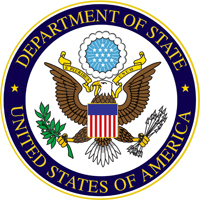Armenia - Level 2: Exercise Increased Caution
Reissued with obsolete COVID-19 page links removed and “Do Not Travel” areas updated. Exercise increased caution in Armenia due to areas of armed conflict. Some areas have increased risk. Read the entire Travel Advisory. Do Not Travel To: The border region with Azerbaijan. The Nagorno-Karabakh region and surrounding territories due to recent hostilities. Following the September 13-15, 2022 military actions along the Armenia-Azerbaijan border, including reports of shelling inside Armenia, U.S. Embassy employees and their families were prohibited from any non-essential travel to select areas along the Armenia-Azerbaijan border. Following a June 2023 review of current threat levels, the U.S. Embassy has eased select travel restrictions. U.S. Embassy Employees and their families remain prohibited from any non-essential travel to the following areas: Tavush region eastward of Varagavan on the H37 roadway. Tavush region eastward of Navur on the H36 roadway. Gegharkunik region east of Vardenis. Travel through Yeraskh village in Ararat region is allowed, stopping is not. Travel to Jermuk, past Getik in Vayots Dzor region via H42 and H43 roads. Syunik region. Nagorno-Karabakh. Country Summary: Until September 2020, the territory of Nagorno-Karabakh and seven other territories internationally recognized as part of Azerbaijan were under Armenian-control. In connection with seven weeks of armed hostilities over Nagorno-Karabakh in the fall of 2020, Azerbaijan took control over the seven territories, as well as parts of Nagorno-Karabakh. While the November 2020 ceasefire arrangement has largely held, military actions along the border occur on a regular basis. From September 13-15, 2022 military actions took place along the Armenia-Azerbaijan border, which included damage to Armenian towns near the border. Read the country information page for additional information on travel to Armenia. If you decide to travel to Armenia: Enroll in the Smart Traveler Enrollment Program (STEP) to receive Alerts and make it easier to locate you in an emergency. Follow the Department of State on Facebook and Twitter. Review the Country Security Report for Armenia. Prepare a contingency plan for emergency situations. Review the Traveler’s Checklist. Visit our website for Travel to High-Risk Areas. Border with Azerbaijan – Level 4: Do Not Travel There is the potential for armed conflict near the Armenia-Azerbaijan border. U.S. citizens should avoid the area. Exercise caution on roads near Armenia’s border with Azerbaijan. Be aware that some portions of the road may cross international boundaries without notice. Roads may be controlled by checkpoints or closed to travelers without notice. The U.S. embassy has prohibited embassy employees and their families from non-essential travel to the border region, as well as other areas of Armenia listed above. Nagorno-Karabakh – Level 4: Do Not Travel The U.S. government is unable to provide emergency services to U.S. citizens in and around Nagorno-Karabakh due to landmine contamination and restricted access.

Reissued with obsolete COVID-19 page links removed and “Do Not Travel” areas updated.
Exercise increased caution in Armenia due to areas of armed conflict. Some areas have increased risk. Read the entire Travel Advisory.
Do Not Travel To:
- The border region with Azerbaijan.
- The Nagorno-Karabakh region and surrounding territories due to recent hostilities.
Following the September 13-15, 2022 military actions along the Armenia-Azerbaijan border, including reports of shelling inside Armenia, U.S. Embassy employees and their families were prohibited from any non-essential travel to select areas along the Armenia-Azerbaijan border. Following a June 2023 review of current threat levels, the U.S. Embassy has eased select travel restrictions. U.S. Embassy Employees and their families remain prohibited from any non-essential travel to the following areas:
- Tavush region eastward of Varagavan on the H37 roadway.
- Tavush region eastward of Navur on the H36 roadway.
- Gegharkunik region east of Vardenis.
- Travel through Yeraskh village in Ararat region is allowed, stopping is not.
- Travel to Jermuk, past Getik in Vayots Dzor region via H42 and H43 roads.
- Syunik region.
- Nagorno-Karabakh.
Country Summary:
Until September 2020, the territory of Nagorno-Karabakh and seven other territories internationally recognized as part of Azerbaijan were under Armenian-control. In connection with seven weeks of armed hostilities over Nagorno-Karabakh in the fall of 2020, Azerbaijan took control over the seven territories, as well as parts of Nagorno-Karabakh. While the November 2020 ceasefire arrangement has largely held, military actions along the border occur on a regular basis. From September 13-15, 2022 military actions took place along the Armenia-Azerbaijan border, which included damage to Armenian towns near the border.
Read the country information page for additional information on travel to Armenia.
If you decide to travel to Armenia:
- Enroll in the Smart Traveler Enrollment Program (STEP) to receive Alerts and make it easier to locate you in an emergency.
- Follow the Department of State on Facebook and Twitter.
- Review the Country Security Report for Armenia.
- Prepare a contingency plan for emergency situations. Review the Traveler’s Checklist.
- Visit our website for Travel to High-Risk Areas.
Border with Azerbaijan – Level 4: Do Not Travel
There is the potential for armed conflict near the Armenia-Azerbaijan border. U.S. citizens should avoid the area. Exercise caution on roads near Armenia’s border with Azerbaijan. Be aware that some portions of the road may cross international boundaries without notice. Roads may be controlled by checkpoints or closed to travelers without notice. The U.S. embassy has prohibited embassy employees and their families from non-essential travel to the border region, as well as other areas of Armenia listed above.
Nagorno-Karabakh – Level 4: Do Not Travel
The U.S. government is unable to provide emergency services to U.S. citizens in and around Nagorno-Karabakh due to landmine contamination and restricted access.



